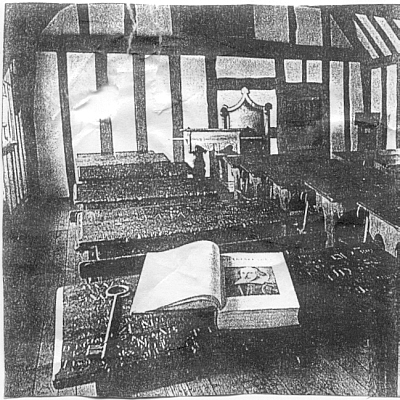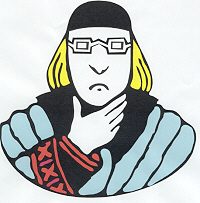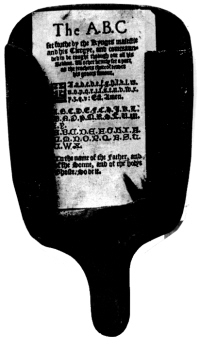

Most children and young people who lived in Elizabethan times did not go to school. Only the well-to-do children were given the privilege. The children of commoners had to work on the farm or in the shops with their parents. Others were apprenticed to tradesmen. Girls were not allowed to become doctors, clergymen, or lawyers, so it was thought there was no point in educating girls.
 Lessons in the
schools of that time began at six o'clock in the summer and seven in winter and
went on until five, with a play interval of fifteen minutes at three. There were
breaks for breakfast at nine and for dinner at eleven. That was a very long day,
and Saturday was not a whole holiday, only a half-day. Students were expected
to learn to read, write and speak Latin. At least one hour each day was spent
learning Bible scriptures and the catechism, and students were often expected
to write a summary in Latin of the sermon preached that day.
Lessons in the
schools of that time began at six o'clock in the summer and seven in winter and
went on until five, with a play interval of fifteen minutes at three. There were
breaks for breakfast at nine and for dinner at eleven. That was a very long day,
and Saturday was not a whole holiday, only a half-day. Students were expected
to learn to read, write and speak Latin. At least one hour each day was spent
learning Bible scriptures and the catechism, and students were often expected
to write a summary in Latin of the sermon preached that day.
 Rules
in school were very strict, and schoolmasters, as teachers were then called,
were expected to impose learning on their young charges with the help of regular
whacks of a cane or birch whip. If tardy he would not merely be scolded, but
rather hit hard on the hands or another part of his body. He would be punished
in a similar way for not learning his lessons, turning in a paper which was
not neat enough to please the schoolmaster, or accidentally dripping a spot
of ink on the paper. (Quill pens made of the feathers of geese, swans or crows
were tedious to write with) Talking back to the schoolmaster would prompt expulsion
from the school, causing shame for him and his family. Parents put their complete
trust into the schoolmaster and his decisions, as it was believed that this
was the only way children could learn. There was no mercy for the idle or the
mischievous.
Rules
in school were very strict, and schoolmasters, as teachers were then called,
were expected to impose learning on their young charges with the help of regular
whacks of a cane or birch whip. If tardy he would not merely be scolded, but
rather hit hard on the hands or another part of his body. He would be punished
in a similar way for not learning his lessons, turning in a paper which was
not neat enough to please the schoolmaster, or accidentally dripping a spot
of ink on the paper. (Quill pens made of the feathers of geese, swans or crows
were tedious to write with) Talking back to the schoolmaster would prompt expulsion
from the school, causing shame for him and his family. Parents put their complete
trust into the schoolmaster and his decisions, as it was believed that this
was the only way children could learn. There was no mercy for the idle or the
mischievous.

The earliest schooling was done with a Horn Book or Absey Book (A.B.C. Book) This was a spelling sheet mounted on a thin board of wood, usually oak, about 9 inches long and 5 or 6 inches wide, bearing a sheet on which were printed the alphabet, and sometimes the nine digits and the Lord's Prayer. It had a handle, and was covered in front by a transparent layer of horn to prevent it from becoming dirty. The board and the sheet of horn were then held together by a thin brass frame. It was difficult to damage or lose. Latin lessons began early and were the basis of all subsequent schooling. The chief text-book was Lily's Grammar, which is mentioned and quoted in Shakespeare's plays.
World Events |
Fashions |
Everyday Living |
The Plague |
Recreation & Sports |
Crime and Punishment |
Education |
Beliefs & Customs |